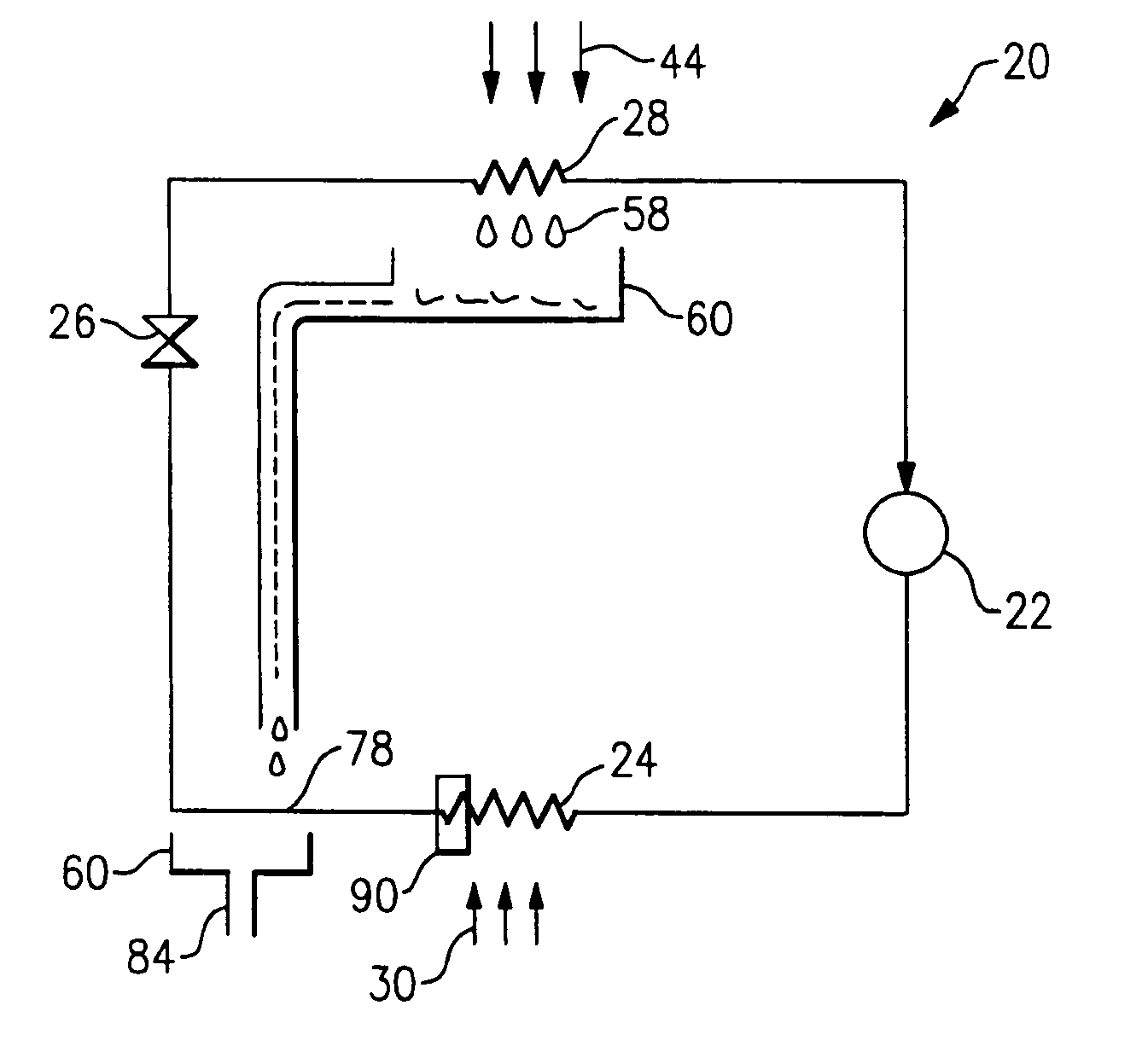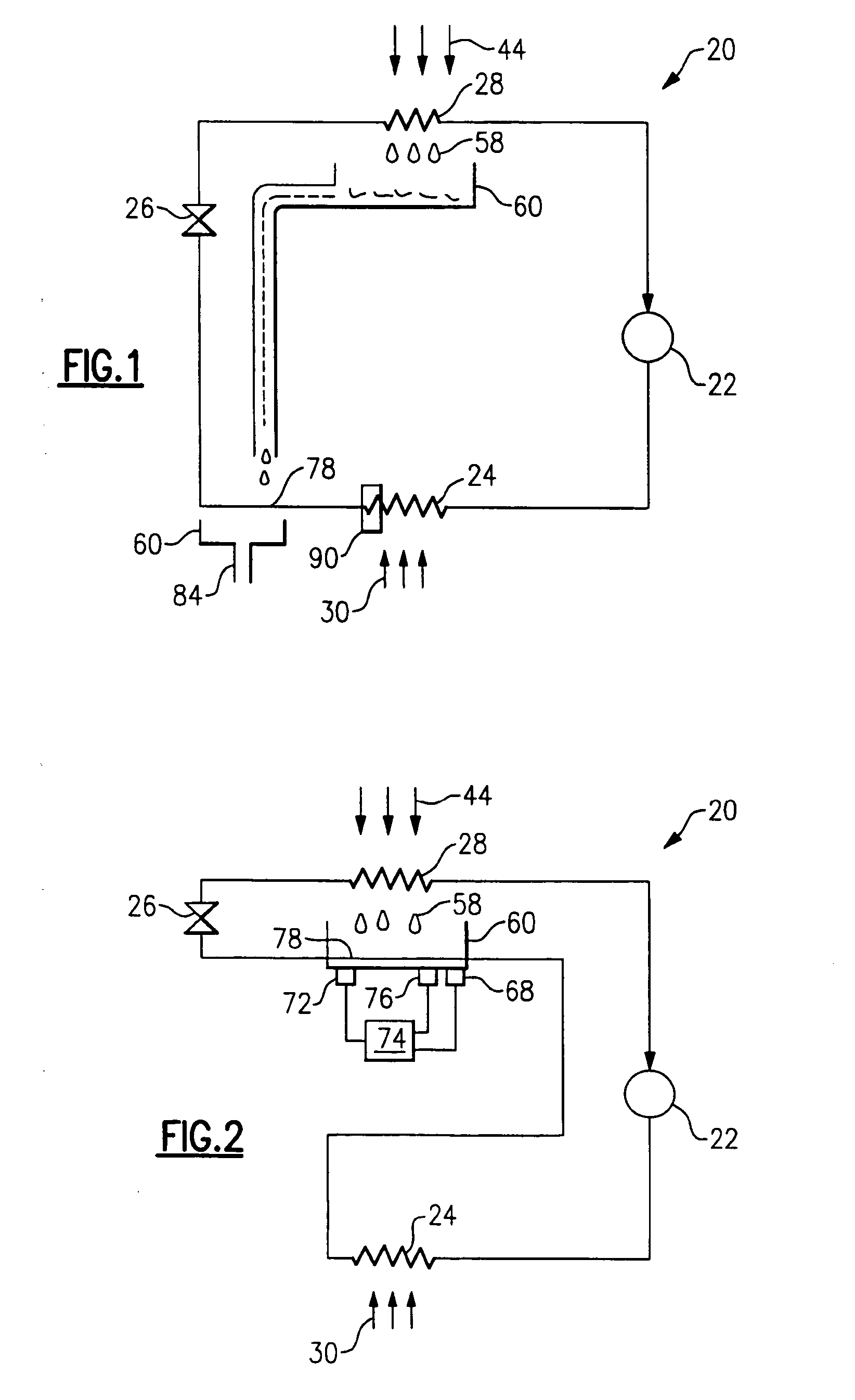Refrigerant subcooling by condensate
a technology of condensate and refrigerant, applied in the field of vapor compression system, can solve the problems of limiting the further reduction of refrigerant temperature, ineffective, and reducing the driving force of heat rejection, and achieve the effect of facilitating subcooling
- Summary
- Abstract
- Description
- Claims
- Application Information
AI Technical Summary
Benefits of technology
Problems solved by technology
Method used
Image
Examples
Embodiment Construction
[0022]FIG. 1 illustrates an example vapor compression system 20 including a compressor 22, a condenser 24, an expansion device 26, and an evaporator 28. The refrigerant exits the compressor 22 at a high pressure and a high enthalpy. The refrigerant then flows through the condenser 24 at a high pressure. An external fluid medium 30, such as water or air, also flows through the condenser 24 and exchanges heat with the refrigerant flowing through the condenser 24. In the condenser 24, the refrigerant rejects heat into the external fluid medium 30, and the refrigerant exits the condenser 24 at a relatively low enthalpy and a high pressure.
[0023] The refrigerant then passes through the expansion device 26, which expands the refrigerant, reducing its pressure and temperature. The expansion device 26 can be a mechanical expansion device (TXV), an electronic expansion valve (EXV) or other type of known expansion device.
[0024] After expansion, the refrigerant flows through the evaporator 2...
PUM
 Login to View More
Login to View More Abstract
Description
Claims
Application Information
 Login to View More
Login to View More - R&D
- Intellectual Property
- Life Sciences
- Materials
- Tech Scout
- Unparalleled Data Quality
- Higher Quality Content
- 60% Fewer Hallucinations
Browse by: Latest US Patents, China's latest patents, Technical Efficacy Thesaurus, Application Domain, Technology Topic, Popular Technical Reports.
© 2025 PatSnap. All rights reserved.Legal|Privacy policy|Modern Slavery Act Transparency Statement|Sitemap|About US| Contact US: help@patsnap.com



